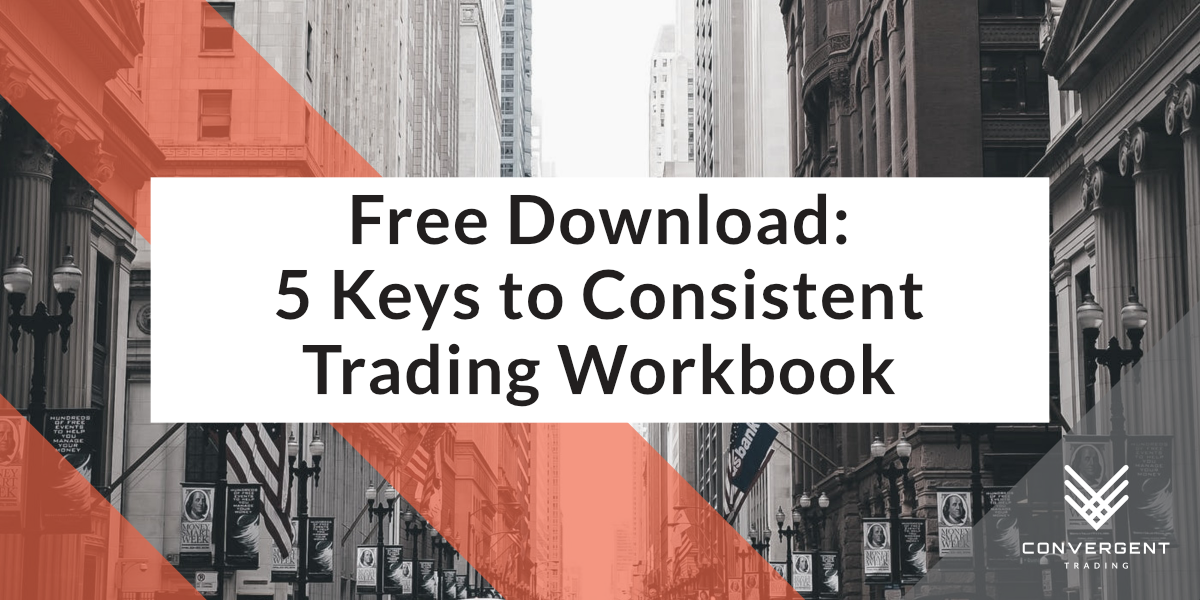The 5 Keys of Consistently Profitable Trading
What is a Consistently Profitable Trader
A “Consistently Profitable Trader” is something that is brought up quite frequently in our industry, but for those who are not yet consistently profitable – the true meaning of this phrase may be rather elusive. Currently, you might believe that a consistently profitable trader is someone who executes his/her setups with edge, each day in markets. While this is partially true, there are many elements of consistency that a consistently profitable trader strives for.
In this blog post, you will learn about the 5 Keys of Consistently Profitable Trading. At the end of the post, you can download our free Keys to Consistency Trading Workbook. For each of the 5 areas a trader must apply a consistent process and structured approach. If you are not consistent across these 5 elements, you may be trading with a blind spot, which can be catastrophic when the blind spot comes to light.
Consistent Trading Inputs
Many traders get hung up on the idea that they need to take in more information to improve their trading. What I’m doing doesn’t seem to be working, so I’ll add another filter, another indicator, another input. Ultimately, this becomes more than one can keep up with on a consistent basis, and the trader who becomes a jack of all trading concepts will be a master of none.
Our goal here is to select a handful of trading inputs and truly become a master at understanding and recognizing the ebbs and flows of those inputs. Many of the top professional traders have quite simple charting setups. Even those who look at more complex studies or analysis, often have a very streamlined chart they use to execute from. Determine your most important trading inputs and constantly stay updated on those.
Consistent Preparation Process
During our pre-market preparation process, we want to make an assessment of the market sentiment. FutureTrader71 has a popular quote “We need to identify what the market is trying to do, and how well it is doing it”. Sentiment is a gauge of how the participants of a particular market are feeling about the product. To use sentiment to our advantage – we must be consistent in our daily approach to analyzing it. This will help us to quickly detect the changes and shifts in our market’s sentiment.
For example, a CPT might employ a pre-market process that considers fundamental factors, news driven narratives, statistics, and technical analysis.
Consistent Review Process
Review is essential to your growth as a trader. Consistent review, will exponentially stimulate your progress. A high-quality review involves three things: a review/grade of our performance during today’s session, setting a goal/focus for the next trading session, and holding ourselves accountable by sharing this review with an accountability partner and/or other traders.
Consistent Risk-Management Plan
Ultimately, risk management is a major hurdle for many traders. Traders often ask about the differences between prop/professional trading vs retail trading. One of the majors differences, is that a prop trader will have a risk manager that will simply shut him/her down for the day if things seem to be getting out of hand. And that risk manager will encourage the trader to add size when they are performing well.
Unfortunately for the at-home independent trader, you don’t have the risk manager watching your account and applying limits. However, believe it or not, overleveraging and blow-ups are an easily fixed risk management issue. For more on this, check out our 2-minute trading tip on the topic, where we explain why you should be contacting your broker to setup broker-enforced loss limits and max position size limits. Think about the numbers that make sense here ahead of time, while you’re in an calm and relaxed state of mind. Relying on yourself to make the right decision in the middle of an emotionally charged trading session is never a good idea.
Consistent Self-Management Plan
Self-Management in trading is the rules that you put in place to elevate your strengths and mitigate your weaknesses. In my second year of trading, I realized I needed to follow a set of “rules”. Mostly to prevent myself from trading while emotionally triggered (also known as being on “tilt”). So I assembled a comprehensive rule book of over 15 trading rules that I must follow daily. How do you think that worked out for me?
As you can probably guess, it was impossible for me to keep 15 unique rules top of mind and implement them on a daily basis. In fact, I didn’t even have these rules memorized, so I needed to review them regularly during the session. This is not a great approach to consistency. I had so many rules, I was unable to implement them consistently at all. When creating your process for this element of consistency, I want to encourage you to think critically about your top 3 rules that will give you this most bang for your buck. In trading, we are already asking ourselves to keep a ton of information top of mind. When managing ourselves, especially during a potential emotionally compromised state of mind – we want to make this process as straightforward as possible.


which platform do you use?
The Convergent staff utilizes a variety of platforms, you can check out our recommended software/tools here: https://community.convergenttrading.com/recommended-tools/ — Our community does not require any specific platforms or software to be utilized, and our Convergent members use a vast array of different platforms.
Thanks for your help
You’re very welcome!